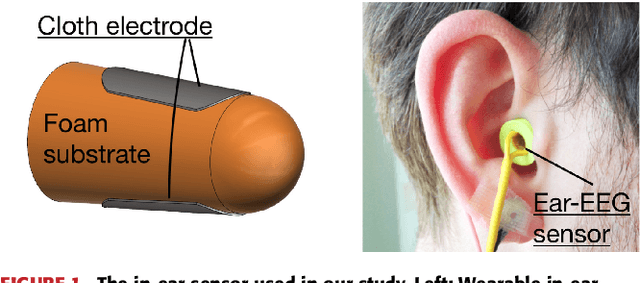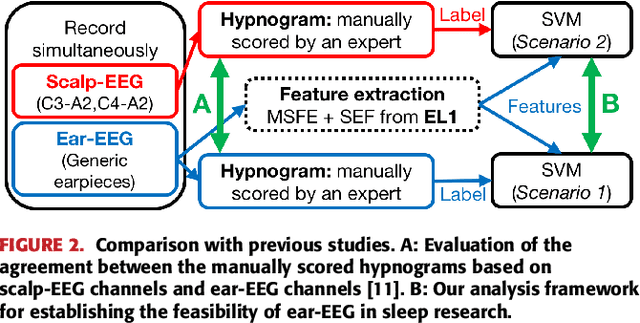Takashi Nakamura
Hearables: Ear EEG Based Driver Fatigue Detection
Jan 16, 2023Abstract:Ear EEG based driver fatigue monitoring systems have the potential to provide a seamless, efficient, and feasibly deployable alternative to existing scalp EEG based systems, which are often cumbersome and impractical. However, the feasibility of detecting the relevant delta, theta, alpha, and beta band EEG activity through the ear EEG is yet to be investigated. Through measurements of scalp and ear EEG on ten subjects during a simulated, monotonous driving experiment, this study provides statistical analysis of characteristic ear EEG changes that are associated with the transition from alert to mentally fatigued states, and subsequent testing of a machine learning based automatic fatigue detection model. Novel numerical evidence is provided to support the feasibility of detection of mental fatigue with ear EEG that is in agreement with widely reported scalp EEG findings. This study paves the way for the development of ultra-wearable and readily deployable hearables based driver fatigue monitoring systems.
Automatic sleep monitoring using ear-EEG
Jan 03, 2017



Abstract:The monitoring of sleep patterns without patient's inconvenience or involvement of a medical specialist is a clinical question of significant importance. To this end, we propose an automatic sleep stage monitoring system based on an affordable, unobtrusive, discreet, and long-term wearable in-ear sensor for recording the Electroencephalogram (ear-EEG). The selected features for sleep pattern classification from a single ear-EEG channel include the spectral edge frequency (SEF) and multi- scale fuzzy entropy (MSFE), a structural complexity feature. In this preliminary study, the manually scored hypnograms from simultaneous scalp-EEG and ear-EEG recordings of four subjects are used as labels for two analysis scenarios: 1) classification of ear-EEG hypnogram labels from ear-EEG recordings and 2) prediction of scalp-EEG hypnogram labels from ear-EEG recordings. We consider both 2-class and 4-class sleep scoring, with the achieved accuracies ranging from 78.5 % to 95.2 % for ear-EEG labels predicted from ear-EEG, and 76.8 % to 91.8 % for scalp-EEG labels predicted from ear-EEG. The corresponding kappa coefficients, which range from 0.64 to 0.83 for Scenario 1 and from 0.65 to 0.80 for Scenario 2, indicate a Substantial to Almost Perfect agreement, thus proving the feasibility of in-ear sensing for sleep monitoring in the community.
 Add to Chrome
Add to Chrome Add to Firefox
Add to Firefox Add to Edge
Add to Edge